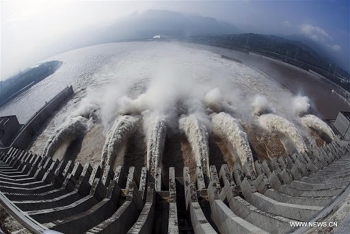Phosphine, possible sign of alien life detected on Venus
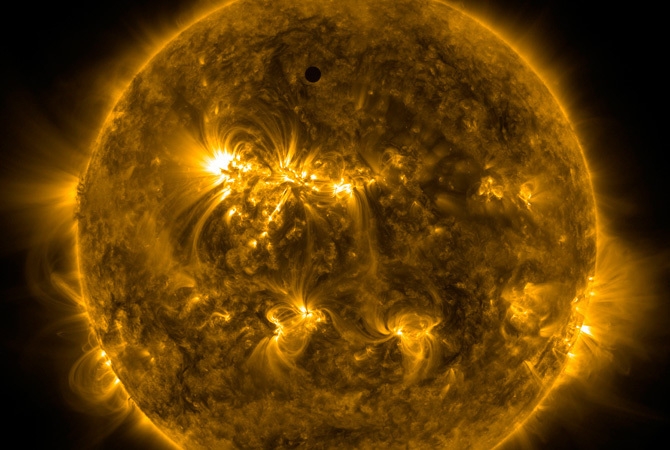 |
| Life may be existing on Venus (Photo: Dawn) |
The discovery is not a direct observation of life on another planet. But the sheer quantity of phosphine on Venus cannot be explained through any known process, leading researchers to suggest that it is a sign of alien life in our solar system, Independent reported.
“I was very surprised - stunned, in fact,” astronomer Jane Greaves of Cardiff University in Wales, lead author of the research published in the journal Nature Astronomy, was quoted by Reuters.
“With what we currently know of Venus, the most plausible explanation for phosphine, as fantastical as it might sound, is life,” said Massachusetts Institute of Technology molecular astrophysicist and study co-author Clara Sousa-Silva.
“I should emphasize that life, as an explanation for our discovery, should be, as always, the last resort,” Sousa-Silva added. “This is important because, if it is phosphine, and if it is life, it means that we are not alone. It also means that life itself must be very common, and there must be many other inhabited planets throughout our galaxy.”
What is Phosphine?
Phosphine - a phosphorus atom with three hydrogen atoms attached - is highly toxic to people.
Phosphine was seen at 20 parts-per-billion in the Venusian atmosphere, a trace concentration. Greaves said the researchers examined potential non-biological sources such as volcanism, meteorites, lightning and various types of chemical reactions, but none appeared viable. The research continues to either confirm the presence of life or find an alternative explanation.
On Earth, phosphine is one of the most foul-smelling gases, with the odour of rotting fish, and is found in places such as pond slime and penguin dung. While it is made through some industrial processes, it is also created by anaerobic organisms, including bacteria and microbes. Earth-based telescopes like those used in this research help scientists study the chemistry and other characteristics of celestial objects.
As such, it is thought to be an excellent “biosignature”, or indication of life. Experts have in the past suggested that the discovery of phosphine in large quantities on other rocky planets would be a certain indicator of alien life – and now it has been found on Venus
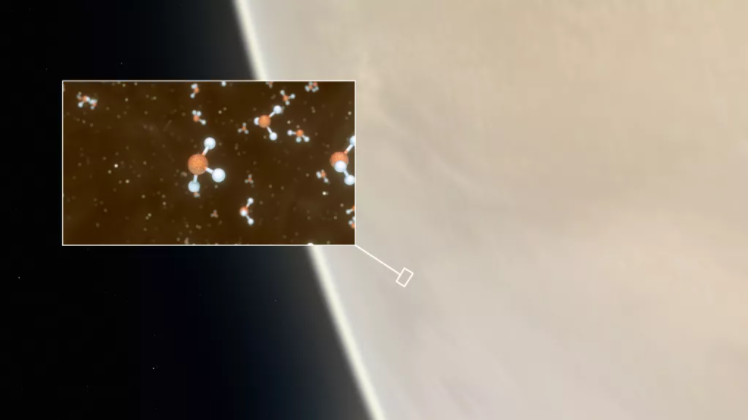 |
Phosphine found on Venus could mean life (Photo: Space) |
Insights into Venus
Venus is Earth’s closest planetary neighbor. Similar in structure but slightly smaller than Earth, it is the second planet from the sun. Earth is the third.
Venus is wrapped in a thick, toxic atmosphere that traps in heat. Surface temperatures reach a scorching 880 degrees Fahrenheit (471 degrees Celsius), hot enough to melt lead.
“I can only speculate on what life might survive on Venus, if indeed it is there. No life would be able to survive on the surface of Venus, because it is completely inhospitable, even for biochemistries completely different from ours,” Sousa-Silva said. “But a long time ago, Venus could have had life on its surface, before a runaway greenhouse effect left the majority of the planet completely uninhabitable.”
Unexpected observation of Phosphine on Venus
The discovery came as something of an accident, when researchers looked to carry out a test on whether it might be possible to detect phosphine in the environment of Venus as a way of establishing a technical baseline. "We had no expectation there was actually going to be any there," said Dr Clements.
But the observations unexpectedly turned up the discovery that there was a detectable amount of phosphine in the clouds above Venus.
"It turned from a 'Let's try this, it's an interesting problem, and we can set some parameters for what needs to be done,' into 'My goodness, we've found it, what on Earth does that mean?'"
Further research used the James Clerk Maxwell Telescope in the US and then the Alma telescope in Chile – the largest in the world – to confirm that phosphine could actually be seen in Venus's atmosphere. A unique signature could be spotted in the data, and indicated that some 20 parts-per-billion of the clouds on Venus was made up of phosphine.
Helen Fraser, an Open University researcher in astronomy, described the team at that moment as "very excited" and that it was a "butterflies-in-our-stomach moment".
The breakthrough comes after a major paper published last year indicated that phosphine was perhaps as certain a sign of life as there could possibly be. The MIT research found that if phosphine were found on a rocky planet, it would be a decisive sign of alien life.
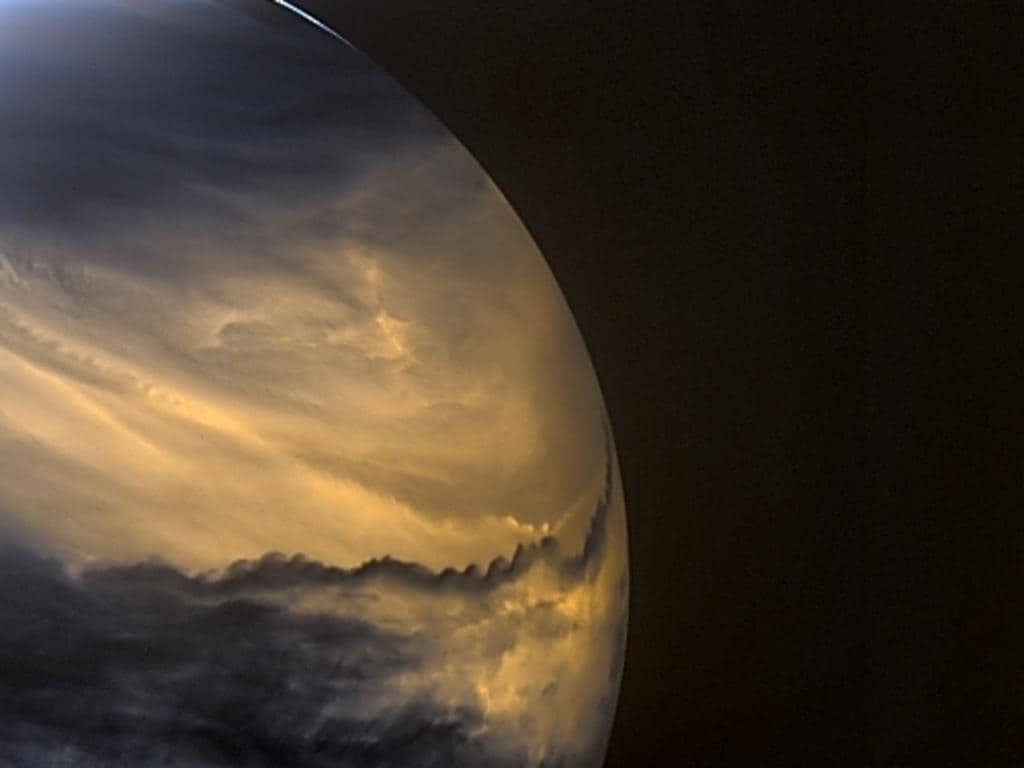 |
| (Photo: Entertainment Overdose) |
Scientists’ plan to carry out further research
Scientists now hope to carry out further work to better understand the processes that are happening on Venus – and whether there might yet be an undiscovered explanation for the phosphine that does not point to alien life.
That will include watching Venus over time, to understand whether the amount of phosphine alters through the year. Scientists can then look for trends or changes over time, which could in turn give a bit more of a clue about where the phosphine gas is coming from.
But the most important work will be sending a spacecraft out to Venus to study the atmosphere directly, by hovering in the clouds that could contain the life and examining what can be found there. "If we want to confirm life in the clouds of Venus then what we really need to do is send a spacecraft to study the atmosphere in detail," said Dr Drabek-Maunder.
The "absolutely perfect" situation would be to launch a sample return mission, which could bring back some of the atmosphere for study back on Earth, said Dr Clements. "Assuming there is life there, you can apply everything we can do in a ground-based lab to deeply understand what's going on", he said, examining the actual biochemistry to figure out exactly how any possible life might actually work.
Any Venusian life is likely to be single-celled bacteria-like life-forms that live in the liquid droplets that make up the clouds hovering over the planet's surface, scientists have speculated. Those liquid droplets are made up of up to 90 per cent sulphuric acid, about a billion times more acidic than even the most acidic environment on Earth, and so it is likely to have some substantial differences from anything that could be found on our planet.
But researchers will also look to discover the underlying processes that allow that life to thrive and reproduce, which could allow us to answer some of the most profound questions about life itself.
If it is the latter, then it would tell us that there is an independent origin of life – that it wasn't transferred from Earth to Venus. In the early days of the solar system, the planets were "effectively sneezing" on each other, said Professor Dartnell, in a way that could have transferred life between the different worlds.
If the two things happened separately, however, then it could suggest that life is spread throughout the universe. Given that the discovery happens to have been made on our neighbouring planet, it would indicate the same could have happened elsewhere and further away.
"If life formed independently on Venus, then life is probably a lot more common than we thought," said Dr Drabek-Maunder.
 | Vietnam affirms support for Palestinian people’s struggle for inalienable rights The following is the full text of the statement by the Permanent Representative of Vietnam to the United Nations, Ambassador Dang Dinh Quy, at the ... |
 | Mars InSight spacecraft lands on Red Planet Cheers and applause erupted at NASA's Jet Propulsion Laboratory on Monday (Nov 26) as a waist-high unmanned lander, called InSight, touched down on Mars, capping ... |
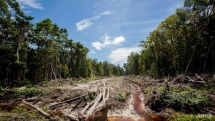 | Protecting nature the best way to keep planet cool: Report The best - and fairest - way to cap global warming is to empower indigenous forest peoples, reduce food waste and slash meat consumption, an ... |
Recommended
 World
World
US, China Conclude Trade Talks with Positive Outcome
 World
World
Nifty, Sensex jumped more than 2% in opening as India-Pakistan tensions ease
 World
World
Easing of US-China Tariffs: Markets React Positively, Experts Remain Cautious
 World
World
India strikes back at terrorists with Operation Sindoor
Popular article
 World
World
India sending Holy Relics of Lord Buddha to Vietnam a special gesture, has generated tremendous spiritual faith: Kiren Rijiju
 World
World
Why the India-US Sonobuoy Co-Production Agreement Matters
 World
World
Vietnam’s 50-year Reunification Celebration Garners Argentine Press’s Attention
 World
World



